Optical aids have been an integral part of modern outdoor adventures, from hunting, golfing, archery, and wildlife observation to hiking, mountaineering, and even fishing.
Hence, binoculars, rangefinders, and similar devices are more than an option for even the most indifferent hunters or outdoor devotees. While most gadgets can be clearly distinguished from others, rangefinders are not like that.
Both golfers and hunters see these devices as their priority possessions.
So, is there a difference between a golf rangefinder and a hunting rangefinder? Today we’re exploring just that. We’ll try to provide an in-depth “Golf Rangefinder vs Hunting Rangefinder” comparison so that you can easily determine what exactly you need/want.
Let’s jump right in!
Golf Rangefinder vs Hunting Rangefinder: Key Differences & Similarities
Over the past decade, laser technology has been made remarkably faster and simpler with advanced ranging modes.
Although the hunting and golf rangefinders functionally appear to be similar, there’s more difference between golf rangefinders and hunting range finders than you may know.
Let’s get an overview of the differences in detail.
Functional Differences
Even if you can use a single rangefinder for both golfing and hunting, they’re significantly different, even amid the presence of the same laser technology.
Golf rangefinders incorporate “First Target Mode” to detect close objects in the golf course like a flag or a pin on where the hole is. On the other hand, Hunting rangefinders use “Distant Target Mode” which avoids close objects to focus on the target in the distant wilderness.
Golf rangefinders don’t require as precise targeting as the hunting ones. So, they’re focused on activity specific features like delivering quick inspection while the hunting rangefinders aim at being precise at all costs.
The magnification system in hunting rangefinders is also a bit more technical than golf laser rangefinders.
Golfing rangefinders cover around 400 yards, which is enough for golfers and bow hunters.
However, in cases of hunting with rifles or other long-distance shooting, you’ll need hunting rangefinders which usually cover 1000 to 1500 yards.
Golf Rangefinders: Types, Functions & Uses

A golf rangefinder measures the distance between the golfer and the pinhole. These devices may vary in terms of usability and specific features. Some basic models lack what the advanced ones boast.
I’ll give you an explanatory note on the functions and uses, so it’ll become easier for you to make an informed decision.
Types/Variations
Golfers depend mostly on two types of rangefinders, such as GPS and laser rangefinders which differ from each other in their working principles.
While the GPS rangefinders use the GPS navigation system for guiding the user to their desired courses, their laser counterparts use modern laser technology to measure the distance.
Now, let’s explore three common types of golf rangefinders you can find.
1. Laser
These rangefinders function with laser beams that provide an authentic reading of the target area. The speed of the laser light differs from one temperature condition to another. This isn’t a problem since golf is usually played only on clear days. This is how they work:
- The light’s beams hit the target and return to the device. The built-in clock inside the rangefinder measure this duration
- The rangefinder keeps a record of the distance covered by the beams and uses it to calculate the traveled distance
- The distance is displayed on the screen of the device. The device takes a bit time to function properly
How to Use a Laser Rangefinder?
- Locate the target
- Point the laser rangefinder straight at the target object/location.
- When you actually see the target through the device, release the laser beam by pulling the trigger. Point exactly at the target.
- Check for the distance on the display.
- If it delivers a negative output, keep the device steady and do the whole thing again for optimum accuracy.
The device features a tilt angle that helps you get correct measurements on hilly golf courses.
It can also help you in locating the different angles produced by different elevation.
When you’re aiming for a flag from a hill, follow these steps:
- Don’t go directly for the flag. Aim for the object closer to it that’s larger in size
- Keep the device steady as you zoom in on the flag
- Level your eye with the target object
2. Optical
These specific rangefinders are simpler than their laser counterparts. Rather than using lasers, these optical rangefinders use mechanical and optical properties to determine the distance of any distant object. The optical rangefinder works with two lenses on each of the sides for zooming in on the target.
How to use it?
- Focus on the target by using one eye and measure the distance by using a built-in scale inside the optical rangefinder.
- When the device finds the peak of the target, the built-in scale inside the device converts it to a distance reading.
3. GPS
This device comes in the shape of a wearable gadget to be put on the wrist or attached to a clip/belt or a golf bag. GPS rangefinders offer distance readings of the target for up to 150 meters.
- The device locates your position by the preloaded points.
- It determines the distance by using the different parts of the course.
How to Use GPS Rangefinders?
- Preload the targets of the course on your pc or smartphone before going to the course.
- Turn the GPS rangefinder on after reaching the course.
- Allow the device to connect to the satellite feed and provide the location.
- Select the target on the device, and it will give you readings on it.
By now, you have a good estimation of your target. You can now plan your route using the coordinates on the GPS map.
Hunting Rangefinders: Types, Functions & Uses
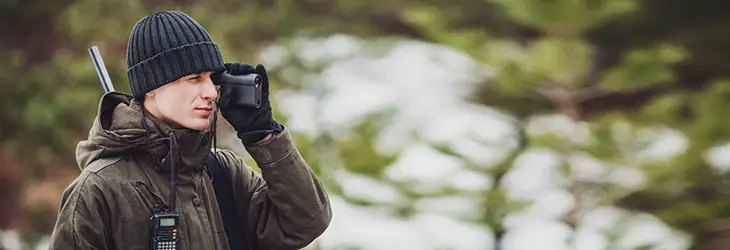
Hunting rangefinders function with Distant Target Priority.
This laser technology avoids any close objects so that the hunter’s view isn’t obstructed by them, and fully focuses on distant objects.
Types/Variations
Choosing the right rangefinder for hunting is essential since bow hunting, rifle hunting, precision shooting, and other outdoor activities that require different rangefinders.
The three main types of hunting rangefinders work differently while maintaining fundamentally similar principles. However, you may benefit from learning their mechanisms.
1. Archery Rangefinders
Bow hunting or archery doesn’t require measurements of distant horizons. Instead, archery rangefinders provide the angle the shooter may miss with the naked eye.
- These devices work on far-target priority mode.
- Archery rangefinders provide multiple distance reports.
- The device is very useful during rain or in the mist with an accurate sensitivity for close-target.
- It has a red LED display, making it easier to see through it in low-light conditions
- The rangefinder accurately delivers accurate readings up to 800-1000 yards depending on the technology and the level of workmanship.
2. Rifle-Hunting Rangefinders
The biggest difference in our “hunting rangefinder vs golf rangefinder” comparison has to be the range.
These powerful hunting rangefinders detect the target accurately within 1000 yards. This is more than enough since a hunter usually gets his shooting covered within 500 yards.
The best rifle-hunting rangefinders work with ballistics software, and you can match your rifle caliber and load with it.
The ballistics software applications have caliber groupings with identical traits, such as bullet trajectory, muzzle velocity, and ballistic coefficient.
High-end rifle-hunting rangefinders typically have a 7x magnification, a mode for angle-compensation, and a mode for fast-scanning and tracking down moving animals.
2. Precision-Shooting Units
Precision shooting rangefinders are meant for those with a love for long-distance hunting/shooting.
These activities require optimum precision, the right amount of sensitivity, and the capability to identify the target from a distant landscape.
These precise rangefinders emit a laser pulse to recognize small targets from a great distance with high precision.
Another critical thing to remember about these units is stability. You can use tripods for this purpose.
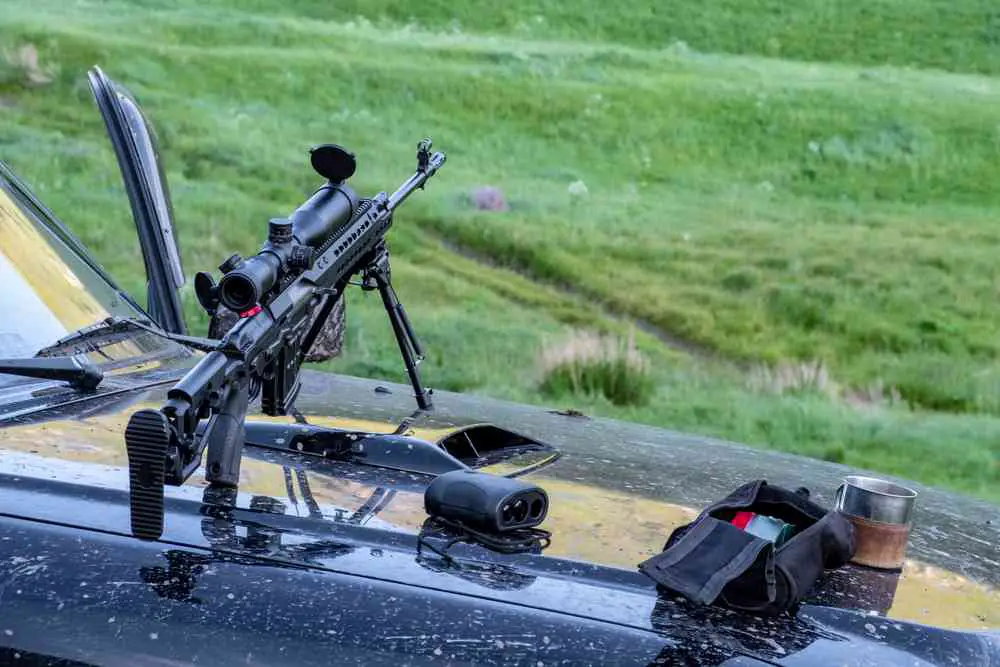
In practice, you can shoot at 1000 yards or further with these. So, integrated ballistics software isn’t a priority for them.
Climate conditions such as wind, humidity, elevation, or harsh temperature affect the course of the bullet. So, the devices that have environmental sensors with which they can calculate these holds are very useful for these shooters.
Price
One major aspect that influences the golf rangefinder vs hunting rangefinder debate heavily is the price. Although the price for a golf rangefinder is not very high, It can vary due to the functionality and features it delivers, and the same goes for hunting rangefinders as well.
The usual price range for a golf rangefinder is $100 – $400. The mid-tier rangefinders are the most commonly used by golfers.
The cost of high-quality hunting rangefinders starts at $100 but can be significantly higher than the golf rangefinder.
This is because the hunting rangefinders come with multiple focuses, multiple lenses, and lots of different functions apart from the ones provided by the golfing rangefinders.
The best hunting rangefinders can be found for around $300.
Golf vs Hunting Rangefinder: Contrast of Features
| Golf Rangefinder | Hunting Rangefinder |
| Works on the closest object possible | Focuses on distant objects |
| Feature Angle and Slope compensation | Features Angle compensation only |
| Works only in optimum conditions | Can work in any weather condition |
| Can’t track down moving objects | Good at tracking moving targets |
| Effective Range: 400-600 yards | Effective Range: 1000-1500 yards |
| Accuracy level: Medium | Accuracy level: High |
| Comparatively more affordable | A bit pricey |
| Additional Features: High Magnification | Additional Features: Multiple Target Tracking |
Hunting vs Golf Rangefinder: Which One to Choose
The answer to this question depends largely on what you want a rangefinder for. If you are mainly looking for something to measure the distance of your golf shots, then go with the golf rangefinder. It is not only more affordable but also more suitable for such activities.
On the other hand, if you need to do some serious long-distance hunting, then investing in a hunting rangefinder will be a better option. You get way more features and accuracy that make it much easier to hit your target accurately from far away distances. So, choose wisely according to your needs and budget!
And with that, we’re at the end of our “Golf Rangefinder vs Hunting Rangefinder” comparison guide today. We provided an in-depth comparison highlighting the differences between these two types of rangefinder so that you can easily choose the best one for your needs.
I hope the information on our discussion proves to be helpful to those in need. If you have any more questions or concerns, feel free to reach out to us, and we’ll be happy to help. Thanks for reading this far, and I wish you all a great weekend ahead! Good Luck.
FAQs
Can I Use My Golf Rangefinder In Hunting?
Some people use one rangefinder for both golfing and hunting purposes. But it doesn’t mean that all the rangefinders are usable for both purposes. Additionally, if you intend to buy one single rangefinder for both purposes, it may cost you more than you think.
Alternatively, you can look out for those rangefinders that have versatile features and are not just designed to cater to both golfing and hunting, and get to cut short your expenses.
How Long Do Golf Rangefinders Last?
The life of a Golf Rangefinder depends on its usage and maintenance. Generally, Golf Rangefinders last for around 3 to 17 years but with proper care and maintenance, they can last longer. Golf rangefinders are usually not very fragile but should be handled with care to ensure that it works properly for as long as possible.
Do Rangefinders Work In Low Light?
No. Rangefinders cannot work in low light as they require an ample amount of light to focus on the target and measure the distance correctly. The laser beam used for measuring distances can be reflected off the target but if there is not enough light,it will not be able to take accurate measurements. However, there are some rangefinder with advanced night vision capabilities.
Do Rangefinders Need Batteries?
Yes, most rangefinders require batteries in order to work. Usually lithium batteries ( size CR2 and CR123A) are used in the rangefinders. Make sure that you check the type of battery required for your rangefinder before buying it.
Do Rangefinders Automatically Turn Off?
Yes, most rangefinders have automatic shut-off features that help conserve battery power when idle. This feature can be adjusted or turned off depending on the model and preferences of the user. Some rangefinders also come with motion sensors which detect when the device is not in use and turn it off automatically.

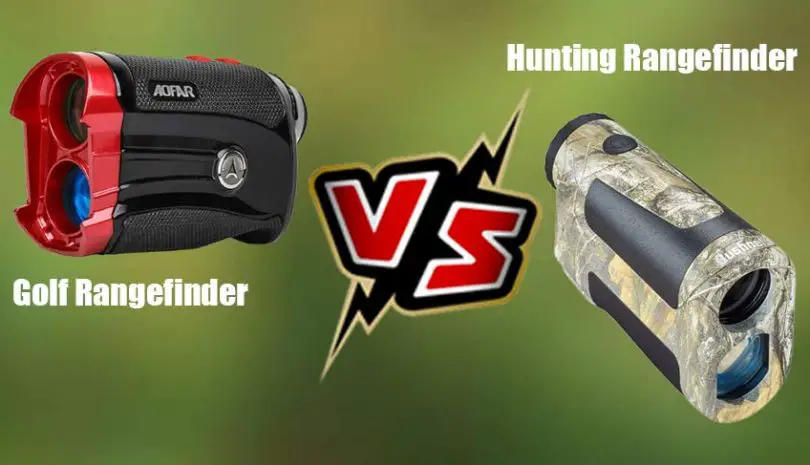



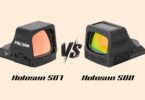
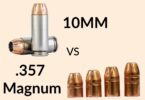


Leave a Comment